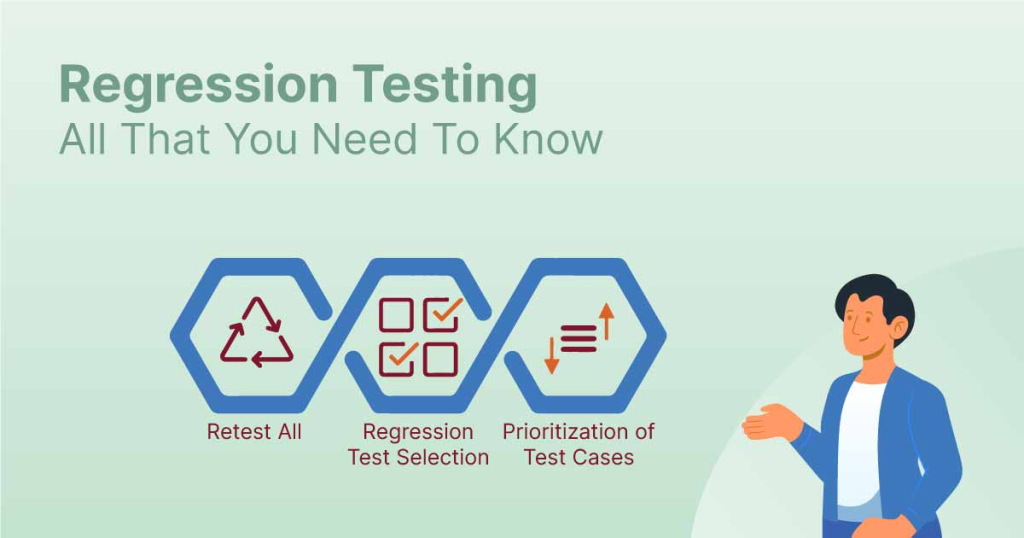
Regression testing is a crucial aspect of software testing, especially in manual testing, as it helps ensure that new code changes or modifications do not adversely affect the existing functionality of the application. The primary significance of regression testing in manual testing lies in its ability to detect and identify any unintended side effects or defects that may arise due to code changes, updates, or enhancements. Here are some key points explaining its significance:
- Detecting Regressions:
- When new features or bug fixes are introduced, there’s a risk of introducing new issues or breaking existing functionality inadvertently. Regression testing helps identify these regressions by verifying that the existing features still work as intended after code changes.
- Ensuring Stability:
- Continuous development and code changes can introduce instability. Regression testing helps maintain the stability of the application by making sure that existing features remain functional and do not degrade over time.
- Verifying Fixes:
- After fixing a defect or a bug, regression testing ensures that the problem has been resolved without introducing new issues. It confirms that the fix did not negatively impact other parts of the system.
- Adapting to Changes:
- As software evolves, changes in one part of the codebase may have unexpected consequences elsewhere. Regression testing helps the team adapt to these changes by identifying areas that may need adjustment or further testing.
Now, let’s discuss how to perform regression testing effectively in a manual testing environment:
- Test Suite Maintenance:
- Maintain a comprehensive and well-organized test suite that covers all critical areas of the application. This suite should be updated regularly to reflect changes in the software.
- Test Case Prioritization:
- Prioritize test cases based on the criticality of the features or modules. Focus on testing the most critical and frequently used functionalities first to ensure that the essential parts of the application are not impacted.
- Version Control:
- Use version control systems to keep track of changes in the codebase. This helps testers understand what has changed and allows them to plan regression testing efforts accordingly.
- Automation for Repetitive Tasks:
- While regression testing is traditionally associated with manual testing, consider automating repetitive and time-consuming test cases. Automation can help speed up the testing process, especially when dealing with a large number of test cases.
- Test Data Management:
- Ensure that test data is managed effectively. Having a standardized set of test data allows for consistency in testing and helps identify any anomalies or issues during regression testing.
- Collaboration with Development:
- Maintain open communication with the development team to stay informed about upcoming changes. This collaboration ensures that testing efforts are aligned with the development timeline and that any potential issues are addressed promptly.
- Continuous Improvement:
- Regularly review and update the regression test suite to incorporate new test cases or remove obsolete ones. Continuous improvement ensures that the testing process remains efficient and effective.
By incorporating these practices, manual regression testing can be a valuable part of the overall software testing strategy, providing confidence in the stability and reliability of the software product.
In conclusion, regression testing emerges as a critical component in the software development life cycle, ensuring that changes or updates do not adversely impact existing functionalities. Its systematic and automated approach helps detect and fix unintended side effects, maintaining the integrity and reliability of the software. By validating that previously developed and tested features still work as intended, regression testing provides confidence in the product’s overall stability. Embracing regression testing as an integral part of the development process contributes to faster delivery cycles, reduced risks, and enhanced software quality, ultimately resulting in a more robust and dependable end product.
Digital Marketing Manager at Cotocus
